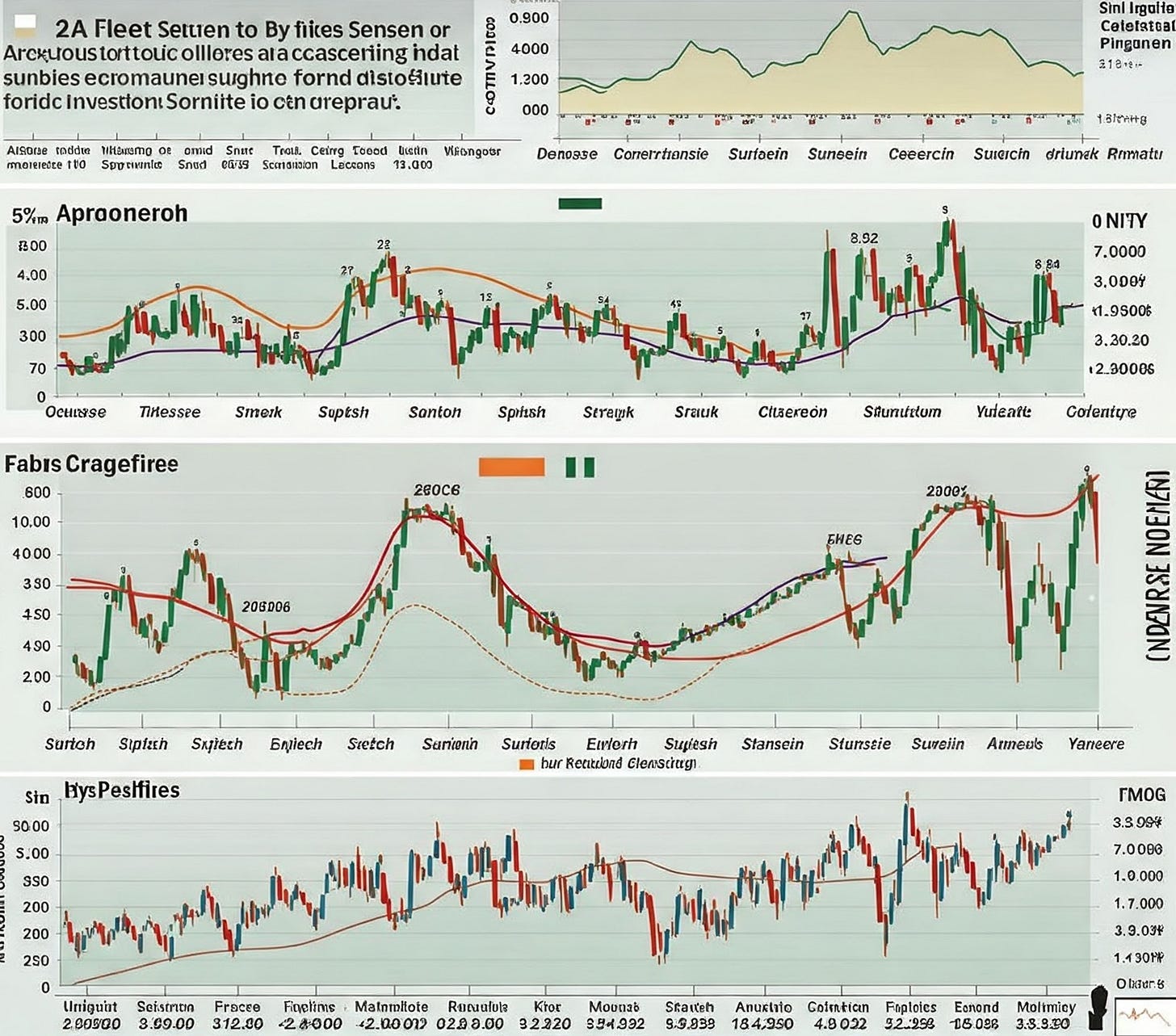How did the market react after India-Pak ceasefire?
it's definitely surprising
Hey you, happy Monday!
New week, new drama.
But this time, it’s not your office WhatsApp group or weekend IPL banter. It’s the stock market, and it just pulled off a wild U-turn.
Let’s see what happened…
📌 The ceasefire between the two countries SHOCKED the stock market
Just days after tensions flared up between India and Pakistan, the markets came back like that one overachiever who aces a test after a panic attack.
The Sensex jumped over 2,100 points and Nifty shot up 553.25 points to hit 24,561.25. That’s not a rally. That’s a victory lap.
Why the sudden optimism? Well, for starters, peace.
The India-Pakistan ceasefire understanding seemed to have worked like a reset button. With the borders calm, investors collectively exhaled and jumped back into the action.
According to experts, the markets showed "remarkable resilience” despite the recent conflict.
Banking and market expert Ajay Bagga told ANI that Indian futures were pointing to a sharp 2% up-move. “Markets weathered the turbulence quite well,” he said, which is market-speak for “we panicked, but we’re back.”
Nifty Realty was the showstopper, surging more than 4% in early trade, while Auto and IT stocks weren’t far behind, rising 2.25% and 2.16%, respectively. It was a full-on comeback concert, and everyone wanted a front-row seat.
Meanwhile, the global stage was also showing some positivity.
US-China trade talks in Geneva were described as “productive and positive”, and Wall Street futures were also hinting at gains.
Gold prices dipped by over 2%, signaling that investors were moving away from “safe zones” and back into the party that is the equity market. Oil and the dollar moved up, too.But not all sectors popped the champagne. Pharma stocks took a hit after US President Trump announced a plan to slash drug prices. Sun Pharma dropped 5.4%, while Glenmark and Cipla followed suit with smaller declines.
So yeah, war and peace aren’t just topics for your school essays, they’re literally moving markets.
📌 Indian defence stocks had the best day
The companies that gained the most
Zen Technologies – up 5%
Ideaforge Technology – up 7.9%
Droneacharya Aerial Innovations – up 5%
Data Patterns – up 6.3%
Bharat Forge – up 4%
Paras Defence – up 7.5% on Friday, down 6.1% on Monday
📌 But why is everyone making money after a ‘war?’
While war typically sends shivers through financial markets, the impact isn’t always black and white.
Here's how conflicts or even the threat of them affect stock markets:
🟢 The ‘positive’ effect
Domestic manufacturing gets a boost: In times of geopolitical tension or war, governments often impose restrictions on imports from adversarial nations, either as a security measure or economic retaliation.
This creates a vacuum in the supply chain, pushing domestic industries to ramp up production and innovation to meet local demand. Sectors such as defense equipment, electronics, and even pharmaceuticals can witness a surge in government contracts and consumer preference.
Additionally, initiatives like "Make in India" gain fresh momentum as self-reliance becomes a strategic priority, leading to job creation, increased capacity utilization, and long-term industrial growth across the country.
Stimulus announcements: After a conflict, governments often roll out economic stimulus packages to revive growth, rebuild infrastructure, and restore investor confidence.
These packages may include tax cuts, increased public spending, subsidies for key industries, and support for small businesses. Such measures inject liquidity into the economy, encourage consumer spending, and create jobs, all of which can uplift market sentiment.
Investors tend to respond positively to these moves, driving a rally in sectors poised to benefit from government contracts and policy support.
🔴 The ‘negative’ effect
Investors panic. But why?
Uncertainty is the nemesis of financial markets, and nothing fuels it faster than the outbreak of conflict. At the first sign of geopolitical instability, investors often enter panic mode, leading to widespread sell-offs in the equity markets.
This sudden liquidation is driven by a desire to preserve capital amid fears of prolonged volatility, economic disruption, or policy unpredictability. As equities tumble, funds typically flow into “safe haven” assets such as gold, government bonds, and even stable foreign currencies.
These instruments are seen as more secure during crises, offering lower but more stable returns and safeguarding portfolios from extreme downside risk.
And, why do foreign investors leave?
Foreign Institutional Investors (FIIs) are crucial drivers of liquidity and sentiment in Indian equity markets, holding nearly 20% of the market capitalization on the NSE.
When geopolitical tensions rise, such as during cross-border conflicts, FIIs often reallocate capital to safer markets, triggering significant outflows.
For example, during the 2019 India-Pakistan Balakot standoff, FIIs pulled out over ₹13,000 crore in a single month. This not only depresses stock prices but also leads to a sharp depreciation in the rupee due to lower dollar inflows.
The domino effect: reduced investor confidence, delayed IPOs, and tighter credit conditions across the economy.
So, that’s it for today. If you enjoyed this edition, subscribe to hear from us every day!
See ya 👋


